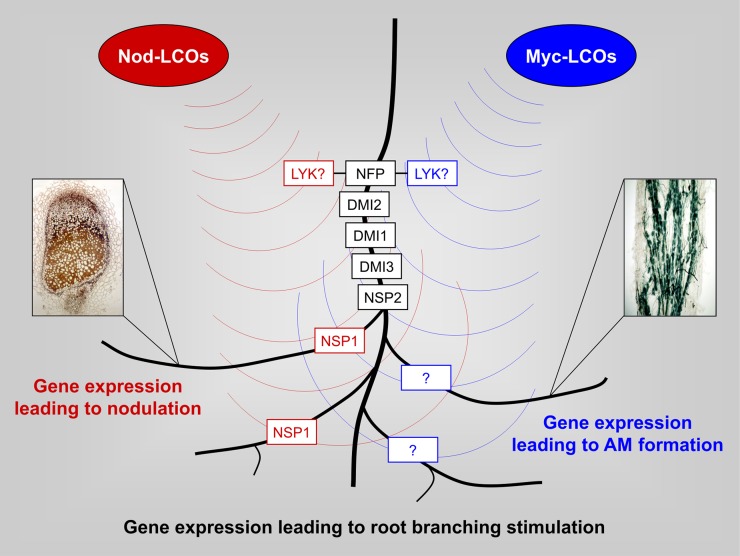Figure 8.
Model for LCO-mediated gene expression leading to nodulation, AM formation, and root-branching stimulation. This model integrates transcriptional responses toward Myc-LCOs in MtNFP and MtDMI3 mutants (Fig. 6) with current knowledge of LCO-mediated signal transduction. In precontact signaling, the perception of diffusible Nod- and Myc-LCOs requires a CSP consisting of the Lyr1-type LysM domain receptor kinase MtNFP, the Leu-rich repeat receptor kinase MtDMI2, the cation channel MtDMI1, the calcium/calmodulin-dependent protein kinase MtDMI3, and the GRAS transcription factor MtNSP2 (Gough and Cullimore, 2011). While the GRAS transcription factor MtNSP1 is specifically required for nodulation (Smit et al., 2005), a corresponding protein related to AM formation has not yet been reported (indicated by a question mark). Currently unknown Lyk-type LysM domain receptor kinases (designated LYK?; Gough and Cullimore, 2011) form heterodimers with MtNFP during initial Nod- and Myc-LCO signal perception. In addition to their requirement during the presymbiotic phase of nodulation and AM formation, Myc- and Nod-LCOs stimulate root branching via the CSP (Maillet et al., 2011). Downstream of the CSP, different components are required for root-branching stimulation (Maillet et al., 2011).

